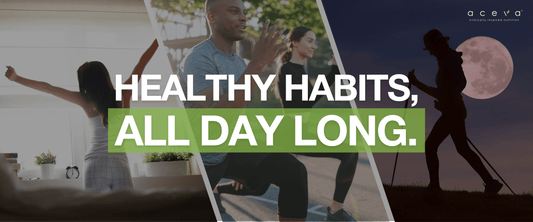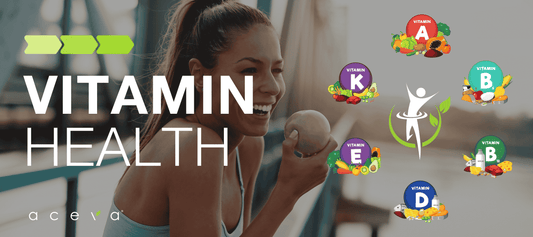
Numerous studies show that many of the everyday products we use—cleaners, makeup and even clothes—can and do enter our bodies. They are traceable in our blood and urine (1). The same is true for toxins that we are exposed to in our daily environments such as air, water, and foods.
Thankfully, the EPA keeps track of the chemical used in the products we use. However, of the 83,000 chemicals reported to the EPA, many having been linked to health problems. Here’s a quick overview of some of the most common toxin exposures and how they affect your health.
Air and Water Pollution
- Air pollutants interfere with the immune system, impact the autonomic nervous system, damage the respiratory tract and eliminatory organs, and are implicated in cancers, respiratory infections, heart disease, and depression disorders (3, 4, 5).
- Our water contains chemicals (6). Treatment plants can’t remove medications, and even if they’re not harmful alone in trace amounts, we don’t know about the combined effects. There’ve been hormone changes in fish and antidepressant drug accumulation in fish brains (7).
Harmful Food Additives
While these health risks are regulated, safety isn’t guaranteed (8). The USDA allows things in food until they are proven unsafe, rather than first establishing safety (9). A few additives that are banned elsewhere, but still used in the US are:
- Azodicarbonamide (ADA) is an additive used to bleach flour. Heat during baking breaks it down into other chemicals that have demonstrated higher tumor development in rats. The European Union has banned its use in foods (10).
- Bromated flour (potassium bromate) strengthens the gluten. IARC classified it as 2B, a possible carcinogen (which has caused cancer in lab animals and the EPA lists it as a probable carcinogen). The FDA promotes alternatives but hasn’t prohibited it. It’s banned in the EU, Canada, Peru, Brazil, and China (10, 11).
- Brominated vegetable oil (BVO) is added to citrus beverages to stabilize flavor. It causes membrane irritation, while chronic exposure causes endocrine disruption and behavioral problems. There’s concern that bromine could accumulate in the body. It is banned in Europe and Japan. (10, 12, 13).
- Ractopamine is fed to livestock to make them leaner. In 2013, the FDA was sued for withholding safety records. It’s a beta-agonist for asthma in humans and mimics adrenaline in animals. Farmers reported stress syndromes, hyperactivity, and death in their livestock after administration though the drugmaker failed to record these (14). It has caused tachycardia, cardiomyopathy, weight gain, deformities, stillbirths, infant death, and tumors in animal and toxicology studies (10, 14, 15). It is banned in 160 countries.
Agricultural chemicals, Glyphosate, and Genetic Engineering
Pesticides (from food and water) can be metabolized, excreted, or accumulated in the body and have “gastrointestinal, reproductive, endocrine, neurological, respiratory, carcinogenic, and dermatological” effects. At the same time, high exposure can lead to hospitalization and death (16, 17).
- “Round-Up” and other glyphosate-based herbicides are correlated with Non-Hodgkin's Lymphoma, while low exposure disrupts the microbiota in rats and mice, resulting in depression and anxiety (18, 19).
- Pesticide-containing GMO corn (Bt corn/MON 863) was engineered to contain Bt toxin, which ruptures pests’ stomachs (20). They claimed the toxin couldn’t survive our stomach acid, but it's becoming clear this isn’t correct. Pesticides are known hormone disruptors, and changes in immunologic markers and hepatorenal toxicity have been seen in rodent studies (22, 23, 24, 25).
- “Agro-runoff chemicals” have recently been termed “zombie chemicals” (scary, right?). These chemicals reassemble themselves in the dark! Since water samples are generally collected during daylight hours, this nocturnal regeneration is missed (27).
Toxic Household Cleaners
Sixty-two toxic chemicals are found in the average household. With no federal regulating agency, manufacturers have no safety standards to adhere to (28). Check your products for these common ingredients:
- Phthalates (a common ingredient in detergents, lotions, soaps, and more) is a known hormone disruptor and can impact “prenatal growth, thyroid function, glucose metabolism and obesity, puberty, fertility, and carcinogenesis” and possibly autism (26, 28).
- 2-Butoxyethanol (window and multipurpose cleaners) affects the blood, kidneys, and the central nervous system. It can cause drowsiness, headache, nausea, and cough (28, 29).
Women and men who clean for work have decreased lung function, and stay-at-home women have higher breast cancer incidences, which is linked to cleaning chemicals (30, 31). Most breast cancers are hormone-related (32). Given the hormone-disruption associated with many of these chemicals, the correlation isn’t surprising.
Chemical-Leaching Plastics
Chronic, low exposure to chemicals that leach from plastic lead to hormone disruption (26, 33, 34). Here are a few common chemicals used in plastic containers, bottles, and more:
- Phthalates (also used in plastics) are reproductive toxicants to men and harmful to women, pregnant women, and fetuses (34).
- Bisphenol-A (BPA) and BPA-free products: BPA, “the bad guy,” is used for harder plastics and epoxy resins (34). BPA is associated with autism, increased BMI, and decreased insulin sensitivity. As a hormone disruptor, it has puberty effects in girls and may have reproductive impacts (26, 35).
- BPA-free bottles still released compounds with estrogenic activity! 95% of tested products did this when exposed to microwaves, dishwashing, and sunlight (36). Even certain foods/beverages can increase this leaching (34).
Bottom Line on Everyday Toxins and Your Health
Chances are, no matter how hard you work to eliminate toxins from your everyday life, you’ll still be exposed to some. While it’s true your liver helps your body filter these toxins out, excessive and continued exposure can lead to a build up. That’s why utilizing a quality detox program like Aceva’s Ultimate Body Cleanse once or twice a year can make a notable impact on how your body feels and functions.

Resources
- https://www.ucsf.edu/news/2017/06/407416/toxic-exposure-chemicals-are-our-water-food-air-and-furniture
- Roundtable on Environmental Health Sciences, Research, and Medicine; Board on Population Health and Public Health Practice; Institute of Medicine. Identifying and Reducing Environmental Health Risks of Chemicals in Our Society: Workshop Summary. Washington (DC): National Academies Press (US); 2014 Oct 2. 2, The Challenge: Chemicals in Today's Society.https://www.ncbi.nlm.nih.gov/books/NBK268889/
- https://www.epa.gov/pmcourse/what-particle-pollution
- https://www.epa.gov/lead-air-pollution/basic-information-about-lead-air-pollution
- https://www.webmd.com/a-to-z-guides/ss/slideshow-health-effects-air-pollution
- https://www.sciencedirect.com/topics/earth-and-planetary-sciences/water-pollutant
- https://www.health.harvard.edu/newsletter_article/drugs-in-the-water
- https://www.who.int/news-room/fact-sheets/detail/food-additives
- https://www.carnivoresq.com/fda-usda-basics/
- https://www.ecowatch.com/6-common-food-additives-used-in-the-u-s-that-are-banned-in-other-count-1882019112.html
- https://healthfully.com/549792-long-term-health-impact-of-bromated-flour.html
- https://www.endocrine.org/-/media/endosociety/files/advocacy-and-outreach/important-documents/introduction-to-endocrine-disrupting-chemicals.pdf
- https://www.mayoclinic.org/healthy-lifestyle/nutrition-and-healthy-eating/expert-answers/bvo/faq-20058236
- https://www.organicconsumers.org/blog/controversial-drug-ractopamine-back-news-and-still-your-food
- Joint FAO/WHO Expert Committee on Food Additives. (2005).Toxicological evaluation of certain veterinary drug residues in food. Geneva: World Health Organization, IPCS--International Programme on Chemical Safety.
- https://www.epa.gov/sites/production/files/2015-09/documents/ag_runoff_fact_sheet.pdf
- Nicolopoulou-Stamati, P., Maipas, S., Kotampasi, C., Stamatis, P., & Hens, L. (2016). Chemical Pesticides and Human Health: The Urgent Need for a New Concept in Agriculture. Frontiers in public health, 4, 148.https://doi.org/10.3389/fpubh.2016.00148
- https://www.sciencedirect.com/science/article/pii/S1383574218300887
- https://usrtk.org/pesticides/glyphosate-health-concerns/
- https://articles.mercola.com/sites/articles/archive/2011/05/31/study-found-toxin-from-gm-crops-is-showing-up-in-human-blood.aspx
- Aris, A., & Leblanc, S. (2011). Maternal and fetal exposure to pesticides associated to genetically modified foods in Eastern Townships of Quebec, Canada. Reproductive toxicology (Elmsford, N.Y.), 31(4), 528–533.https://doi.org/10.1016/j.reprotox.2011.02.004
- https://pubmed.ncbi.nlm.nih.gov/19007233/
- https://articles.mercola.com/sites/articles/archive/2010/04/03/jeffrey-smith-interview.aspx
- Séralini, G. E., Cellier, D., & de Vendomois, J. S. (2007). New analysis of a rat feeding study with a genetically modified maize reveals signs of hepatorenal toxicity. Archives of environmental contamination and toxicology, 52(4), 596–602.https://doi.org/10.1007/s00244-006-0149-5
- https://www.globalresearch.ca/genetically-modified-foods-unsafe-evidence-that-links-gm-foods-to-allergic-responses-mounts/7277
- Street, M. E., Angelini, S., Bernasconi, S., Burgio, E., Cassio, A., Catellani, C., Cirillo, F., Deodati, A., Fabbrizi, E., Fanos, V., Gargano, G., Grossi, E., Iughetti, L., Lazzeroni, P., Mantovani, A., Migliore, L., Palanza, P., Panzica, G., Papini, A. M., Parmigiani, S., … Amarri, S. (2018). Current Knowledge on Endocrine Disrupting Chemicals (EDCs) from Animal Biology to Humans, from Pregnancy to Adulthood: Highlights from a National Italian Meeting. International journal of molecular sciences, 19(6), 1647.https://doi.org/10.3390/ijms19061647
- https://www.nature.com/news/hormone-disruptors-rise-from-the-dead-1.13831
- https://experiencelife.com/article/8-hidden-toxins-whats-lurking-in-your-cleaning-products/
- https://www.who.int/ipcs/publications/cicad/cicad_10_revised.pdf
- https://www.sciencedaily.com/releases/2018/02/180216084912.htm
- Zota, A.R., Aschengrau, A., Rudel, R.A. et al. Self-reported chemicals exposure, beliefs about disease causation, and risk of breast cancer in the Cape Cod Breast Cancer and Environment Study: a case-control study. Environ Health 9, 40 (2010).https://doi.org/10.1186/1476-069X-9-40
- https://www.webmd.com/breast-cancer/breast-cancer-types-er-positive-her2-positive
- https://plasticpollutioncoalition.zendesk.com/hc/en-us/articles/222813127-Why-is-plastic-harmful-
- https://www.health.harvard.edu/staying-healthy/is-plastic-a-threat-to-your-health
- https://biodesign.asu.edu/news/perils-plastics-risks-human-health-and-environment
- https://www.npr.org/2011/03/02/134196209/study-most-plastics-leach-hormone-like-chemicals
- https://www.clearlyfiltered.com/pages/pfas
- Elson Haas, 2004. The Detox Diet, 3rd Edition.
- https://www.youtube.com/watch?v=qOTIB8ag_gg
- https://aceva.com/products/ultimate-body-cleanse






